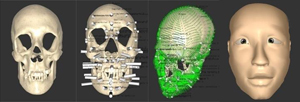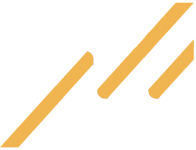A new software will identify missing people faster
Identifying individuals from a skull is a critical process in the legal and forensic medicine; they have used art as procedure of craniofacial reconstruction so far. The project CRANEO (skull), which is part of the Virtual Reality Area of Research Centre for Smart Buildings and Energy Efficiency of the Universidad Politecnica de Madrid CeDInt-UPM, seeks to develop an automated system to reconstruct the faces of individuals from skeletal remains.
The complete system consists of an application capable of generating a 3D mesh that simulates the skin of a person from the 3D model for your skull.
 Leticia Carnero, researcher of CeDint-UPM, explains that the traditional process was artistic; an artist used to make a clay model. What they try do is “to accelerate this process and to make it automatic by using this software which is Virtual Reality and 3D graphics; This process will allow experts to identify persons in criminal investigations or anthropological issues”.
Leticia Carnero, researcher of CeDint-UPM, explains that the traditional process was artistic; an artist used to make a clay model. What they try do is “to accelerate this process and to make it automatic by using this software which is Virtual Reality and 3D graphics; This process will allow experts to identify persons in criminal investigations or anthropological issues”.
Another use of the application developed by the researchers of UPM is the superposition of previously imported photos of geometric reconstruction of the skull in order to generate the percentage of resemblance automatically. The results and information are stored in databases that is remotely accessed via internet upon user authentication
Applications for legal and forensic medicine and surgery
The software CRANEO has other applications in the fields of legal and forensic medicine. However, some results might be also extrapolated to other fields of medicine such as surgery, where would save time in surgery.
These surgeries would need a 20% fewer hours because the Virtual Reality application would create simulation environments that would see the results in advance”, says Carmen Lastres, CRANEO project coordinator in CeDint-UPM.
David Garrido, a researcher at CeDInt-UPM, developed the second module of the project concerning the skull-photo superposition; the application will "automatically set the percentage of similarity between a skull and thousands of photographs you have in your base data ".
Within minutes, the application will show the margin of success you may have with respect to the skull, "which will save time in the forensic field, for example identifying missing people”.
In addition, the Project will facilitate police work allowing them to identify missing bodies of criminals thank to a skull and photographic superposition.

